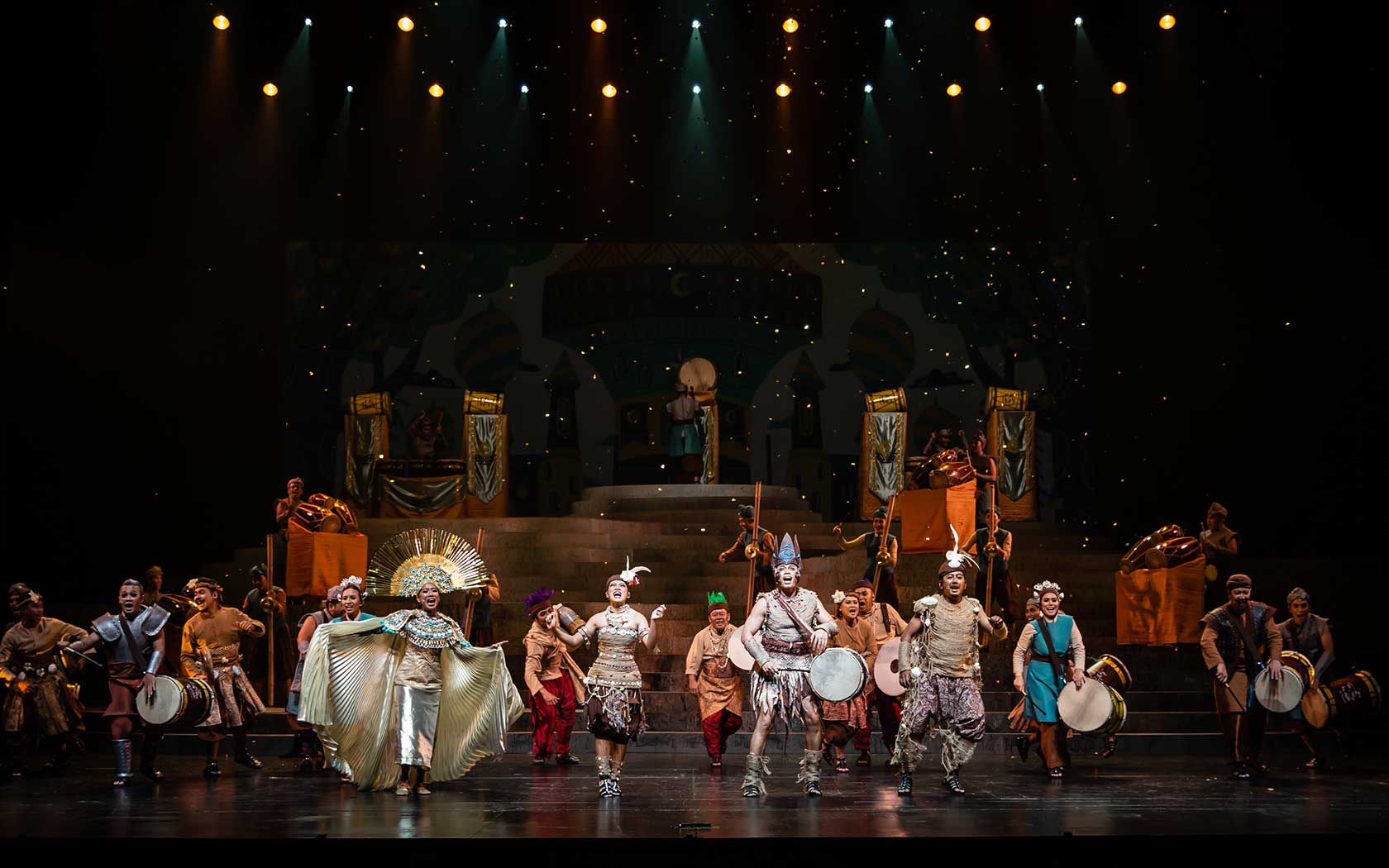We use cookies to improve your experience on our site. To find out more, read our data protection and cookie policy. By using our site, you agree to our use of cookies. Close to continue browsing.
Esplanade Presents
The Ritual Theatre of Edo Kagura
28 Apr 2023, Fri, 9pm & 10.30pm
29 Apr 2023, Sat, 5.30pm
(Intermission: None)
Esplanade Annexe Studio, Esplanade Concourse
This event is over.


This event is over.
With the shrill call of the bamboo flute and the beating of the drums, the performance begins. A hunched creature appears on stage, wrapped in a green cloak with white motifs, sporting a silvery mane that extends down its back from its wooden lacquered head painted in gold and red. This figure moves along to the music, sometimes leonine in nature, sometimes playfully feline—this is the kotobuki-jishi, a lion dance that chases off evil spirits and brings longevity and auspiciousness.
The kotobuki-jishi is one of many dances in Edo Sato Kagura, a masked performance art with origins in Edo (current day Tokyo) that comprises dance and music. Although Edo Sato Kagura is considered a folk artform, its practitioners are professionals, with the versatility to take on both the dance and music roles. In this presentation, observe the intricate and emotive dance movements in the Edo Sato Kagura repertoire, accompanied by folk music reminiscent of a summer matsuri.
Performing at this year’s edition of the festival is Wakayama Shachu, one of the four main lineages of Edo Sato Kagura associated with different regions in Tokyo. Wakayama Shachu is officially recognised by the Japanese government as a transmitter of national Important Intangible Folk Cultural Property.
About Edo Kagura
The term ‘Kagura’ refers to a type of Shintō ritual ceremonial dance or ritual drama, often performed at shrine festivals and theatres.
Watch a shrine performance beginning with the kotobuki-jishi >
Comprising tales from mythology, the reenactments—plots that range from the forging of swords to dramatic battles—feature characters such as the sun goddess Amaterasu, the god of sea and storms Susano-o, and the god of agriculture and wealth, Daikokuten. Humorous pieces contrast the serious segments, which spotlight characters such as the comical Hyottoko and Okame. As the dancers are masked, they cannot use their faces to express the characters’ emotions, and thus externalise the complex and delicate emotions through the movements of their head and limbs.
Watch a clip of the Hyottoko and Okame >
These performances are accompanied by hayashi (a small ensemble of musicians), which comprises high-pitched bamboo flutes like the shinobue and nohkan (Noh flute), as well as various small drums like the shimedaiko and odaiko, played alongside hand-gongs, and cymbals. The sound they make is synonymous with summer festivals and carries a feeling of nostalgia for many Japanese people.
Free seating with limited standing space.
28 Apr:
- Patrons who have registered will have priority entry to the venue.
- Patrons who have registered must arrive 5 mins before the start of the event to guarantee your admission.
- Patrons who have registered but are not at the venue 5 mins before the start will have their seats released to walk-in patrons on a first-come, first-served basis.
- Limited seats are available at the door.
- Seating will be assigned by Esplanade’s ushers.
- Free seating with limited standing space.
6 and above (28 Apr)
All ages (29 Apr)
Wakayama Shachu
Hailing from the Taito Ward, Tokyo, Wakayama Shachu is one of the four main lineages of Edo Kagura that are associated with different regions in the city. Wakayama Shachu is officially recognised by the Japanese government as a transmitter of national Important Intangible Folk Cultural Property.
28 Apr 2023, Fri
9pm
10.30pm
29 Apr 2023, Sat
5.30pm


Become a member

Great arts experiences begin with Esplanade&Me. Join this membership to enjoy ticket specials on shows at Esplanade, early bird specials, promotions at Esplanade Mall, unlimited access to Offstage and more.

Never miss a show again. Get on our mailing list.
- The Ritual Theatre of Edo Kagura











